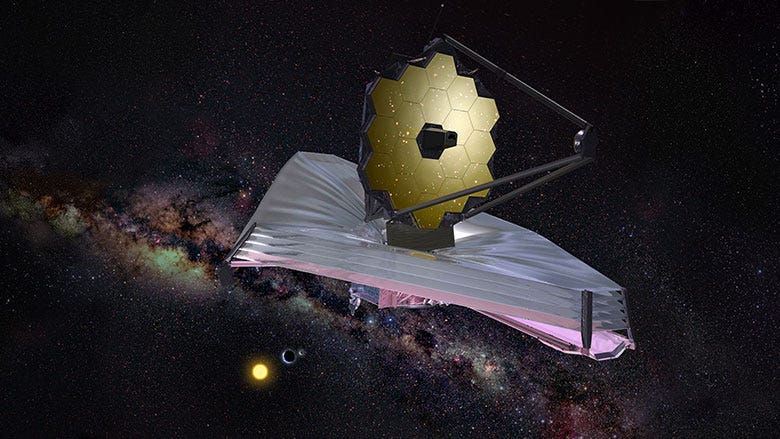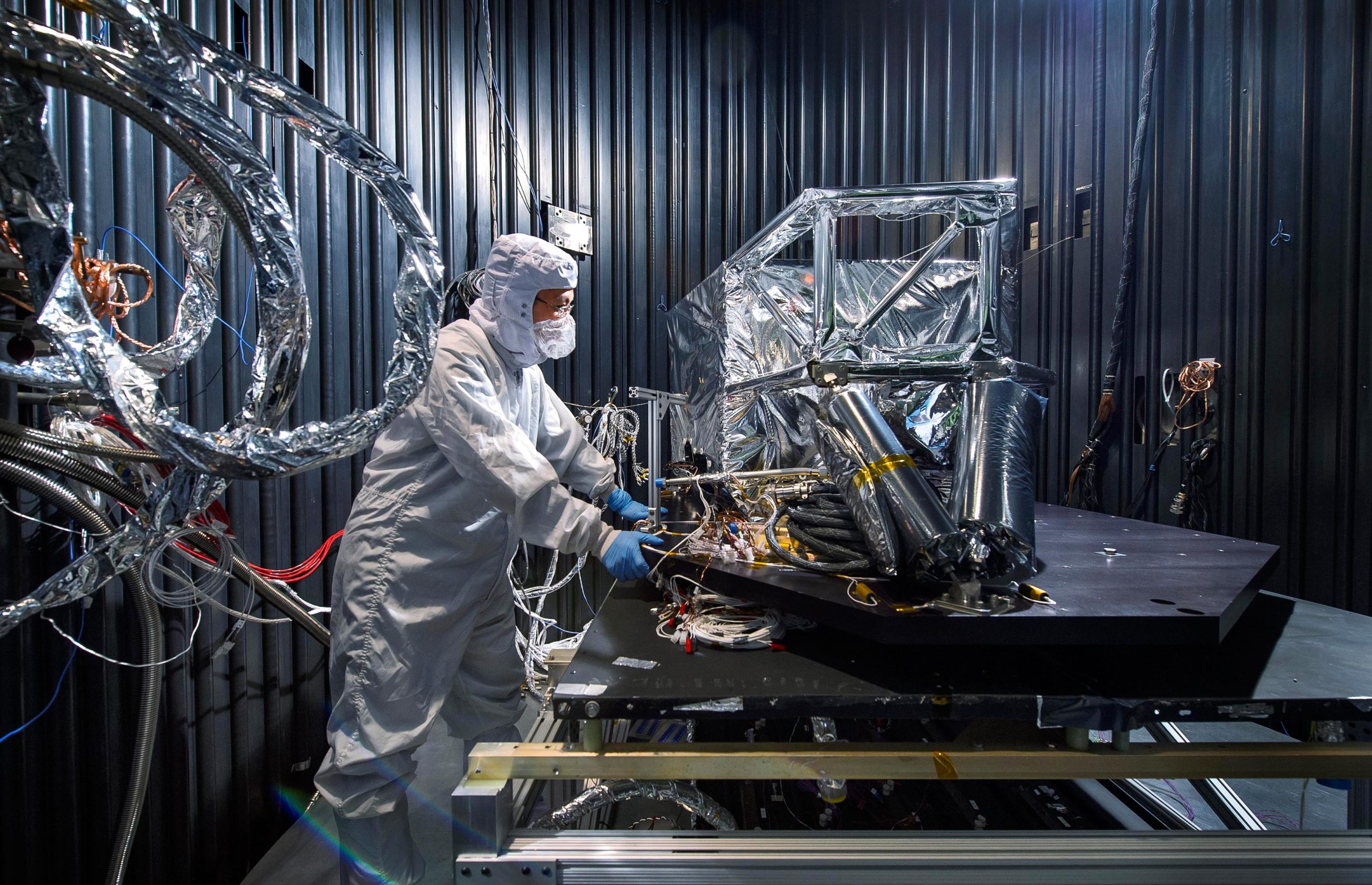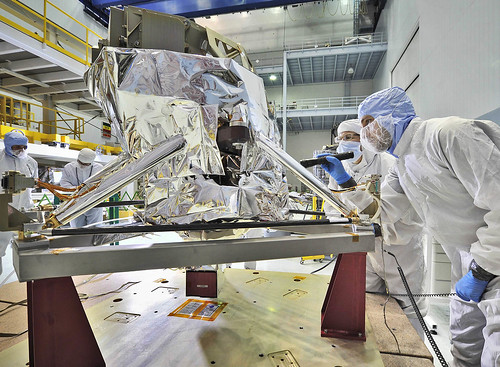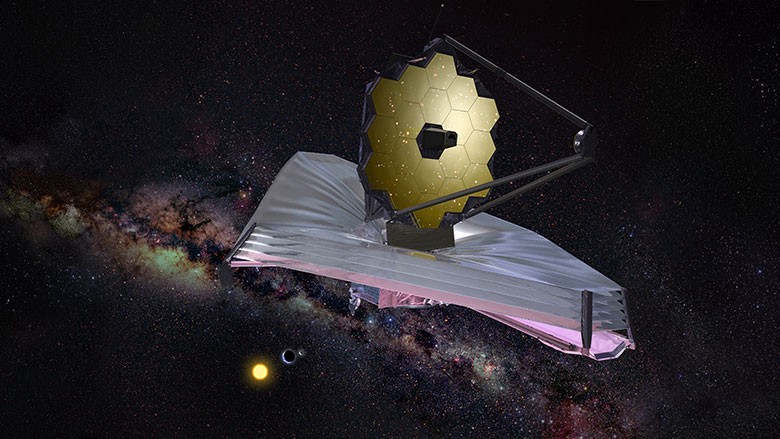
The James Webb Space Telescope Is One Step Closer To Being Complete
The James Webb Space Telescope has been very busy over the past few months. After an initial launch in late December, the next-generation space telescope has been hard at work. This first included hundreds of deployments followed by primary mirror alignment and much more. Now in the middle of April, the telescope is getting very close to complete.
Just yesterday NASA provided another update on the JWST’s progress and plans. The last update was almost a month ago in the middle of March. Since then Webb has been working to cool off and make sure vital instruments such as the Mid-Infrared Instrument or MIRI to the correct operating temperature. This most recent update marks another big step and brings us closer to consistent images of the Universe.
While it has been a long time since Webb first launched, the complexity of the telescope is expected to pay off tenfold in terms of what it provides. With each successful milestone, NASA gets more confident and excited for what’s to come. Here I will go more in-depth into the recent update from NASA and what to expect regarding the future of Webb.
NASA MIRI Update

It has been a few weeks since the last JWST update, however, it has made some significant progress in that time. Just yesterday NASA tweeted saying, “As @NASAWebb gets ready for action, its Mid-Infrared Instrument (MIRI) has reached a temperature of less than 7 kelvins (−447°F or −266°C). This helps MIRI detect the faintest of infrared signals.” Specifically, before Webb can find the first galaxies that were formed after the big bang, its multiple instruments first need to get cold, really cold. On April 7th, Webb’s Mid-Infrared Instrument (MIRI) – a joint development by NASA and ESA (European Space Agency) – reached its final operating temperature below 7 kelvins. Along with Webb’s three other instruments, MIRI initially cooled off in the shade of Webb’s tennis-court-size sunshield, dropping to about 90 kelvins (minus 298 F, or minus 183 C). But dropping to less than 7 kelvins required an electrically powered cryocooler. The Webb MIRI cryocooler is described as a sophisticated refrigerator with its pieces distributed throughout the observatory. The primary piece is the Cryocooler Compressor Assembly. It is a heat pump consisting of a precooler that generates about one-fourth a Watt of cooling power at about 14 kelvin (using helium gas as a working fluid), and a high-efficiency pump that circulates refrigerant (also helium gas) cooled by conduction with the precooler, to MIRI. The precooler features a two-cylinder horizontally-opposed pump and cools helium gas using pulse tubes, which exchange heat with a regenerator acoustically. The high-efficiency pump is another two-cylinder horizontally-opposed piston device that circulates a different batch of helium gas separate from the precooler’s helium. All allowing MIRI to drop to the necessary temperature.
In terms of recent progress, last week, the team passed a particularly challenging milestone called the “pinch point,” when the instrument goes from 15 kelvins (minus 433 F, or minus 258 C) to 6.4 kelvins (minus 448 F, or minus 267 C). “The MIRI cooler team has poured a lot of hard work into developing the procedure for the pinch point,” said Analyn Schneider, project manager for MIRI at NASA’s Jet Propulsion Laboratory in Southern California. “The team was both excited and nervous going into the critical activity. In the end it was a textbook execution of the procedure, and the cooler performance is even better than expected.” The low temperature is necessary because all four of Webb’s instruments detect infrared light, wavelengths slightly longer than those that human eyes can see. Distant galaxies, stars hidden in cocoons of dust, and planets outside our solar system all emit infrared light. However, so do other warm objects, including Webb’s own electronics and optics hardware. Cooling down the four instruments’ detectors and the surrounding hardware suppresses those infrared emissions. MIRI detects longer infrared wavelengths than the other three instruments, which means it needs to be even colder. Another reason Webb’s detectors need to be cold is to suppress something called dark current, or electric current created by the vibration of atoms in the detectors themselves. Dark current mimics a true signal in the detectors, giving the false impression that they have been hit by light from an external source. Those false signals can drown out the real signals astronomers want to find. Since temperature is a measurement of how fast the atoms in the detector are vibrating, reducing the temperature means less vibration, which in turn means less dark current.
Not only this but MIRI’s ability to detect longer infrared wavelengths also makes it more sensitive to dark current, so it needs to be colder than the other instruments to fully remove that effect. For every degree the instrument temperature goes up, the dark current goes up by a factor of about 10. Once MIRI reached a frigid 6.4 kelvins, scientists began a series of checks to make sure the detectors were operating as expected. During these checks, the MIRI team looks at data describing the instrument’s health, then gives the instrument a series of commands to see if it can execute tasks correctly. This milestone is the culmination of work by scientists and engineers at multiple institutions in addition to JPL, including Northrop Grumman, which built the cryocooler, and NASA’s Goddard Space Flight Center, which oversaw the integration of MIRI and the cooler to the rest of the observatory. “We spent years practicing for that moment, running through the commands and the checks that we did on MIRI,” said Mike Ressler, project scientist for MIRI at JPL. “It was kind of like a movie script: Everything we were supposed to do was written down and rehearsed. When the test data rolled in, I was ecstatic to see it looked exactly as expected and that we have a healthy instrument.” In addition, Alistair Glasse, MIRI instrument scientist mentioned, “I am immensely proud to be part of this group of highly motivated, enthusiastic scientists and engineers drawn from across Europe and the U.S..” “This period is our ‘trial by fire’ but it is already clear to me that the personal bonds and mutual respect that we have built up over the past years is what will get us through the next few months to deliver a fantastic instrument to the worldwide astronomy community.” Its clear that everyone involved in this process is very satisfied and excited for the future of Webb. The telescope is complex and requires each milestone to go perfectly in order for it to operate as intended in the near future.
Future of Webb

This recent milestone marks great progress however there is still a lot of work with Webb needed. Specifically, there are still more challenges that the team will have to face before MIRI can start its scientific mission. Now that the instrument is at operating temperature, team members will take test images of stars and other known objects that can be used for calibration and to check the instrument’s operations and functionality. The team will conduct these preparations alongside calibration of the other three instruments. These other three instruments include the Near-Infrared Camera, Near-Infrared Spectrograph, and Near-Infrared Imager and Slitless Spectrograph/Fine Guidance Sensor. Each of these four instruments includes a set of components that are common in research telescopes, along with components that are more specialized. For example, Cameras capture two-dimensional images of regions of space. NIRCam and NIRISS capture images in the near-infrared, while MIRI captures mid-infrared images. NIRSpec is the only instrument without a camera. Spectrographs spread light out into a spectrum so that the brightness of each individual wavelength can be measured. Webb has a number of different types of spectrographs, each designed for a slightly different purpose. All four of Webb’s instruments have spectrographs. Coronagraphs are opaque disks used to block the bright light of stars in order to detect the much fainter light of planets and debris disks orbiting the star. NIRCam and MIRI have coronagraphs. Not only this but there are also different detectors and filters used in these different instruments that are necessary for Webb’s operation. All of which need to be calibrated and checked to ensure they are working as intended and ready for Webb to begin taking consistent images. Based on the recent progress and what is next, NASA estimates Webb will begin delivering its first science images this summer.
Conclusion
There is so much we don’t know about the Universe. Throughout time we have built telescopes on land and sent them into space to get a better view. The James Webb Space Telescope however is the most advanced and powerful telescope ever sent into space. After months of progress, it is getting very close to taking some of its first scientific images and more. If everything goes according to plan Webb will finish its final steps over the next few months. We will have to wait and see how it progresses and the impact it has on the space industry.
